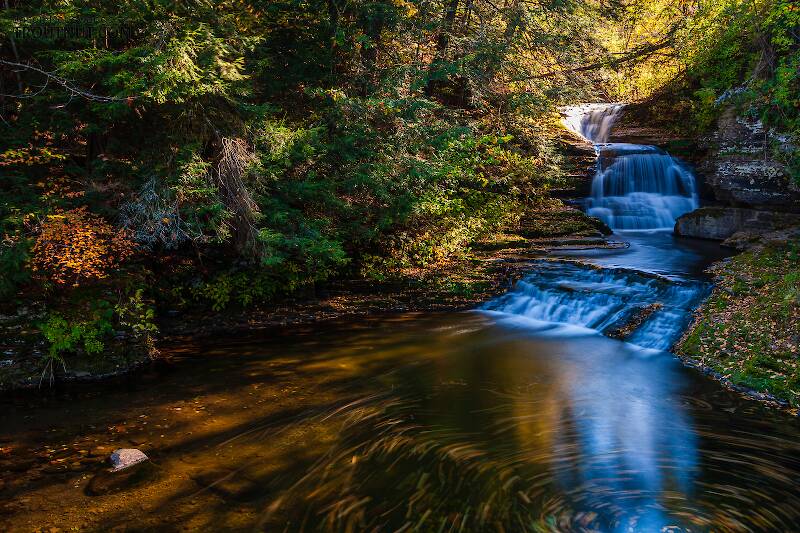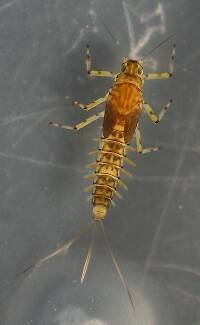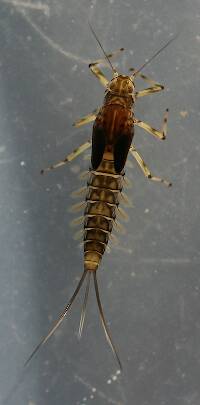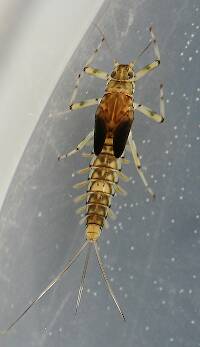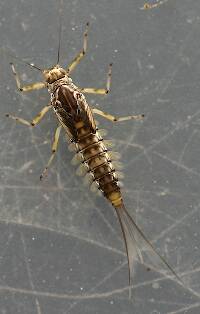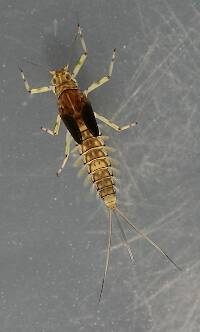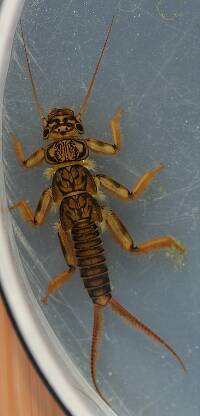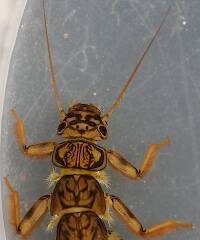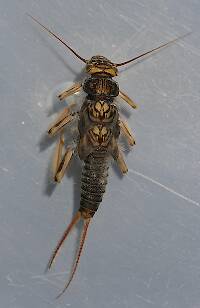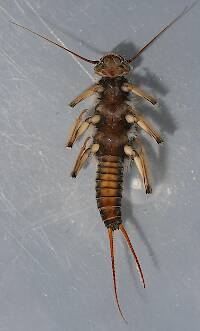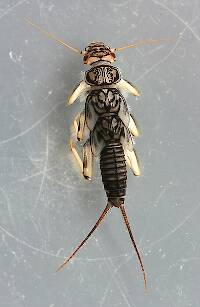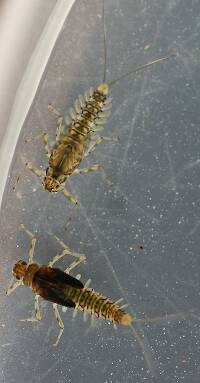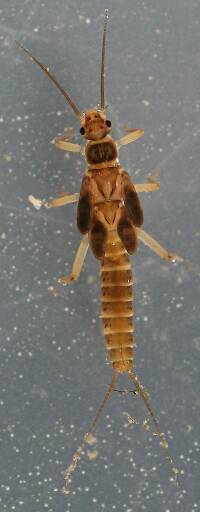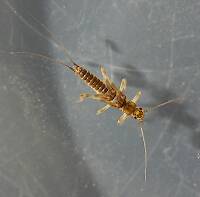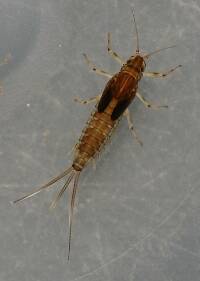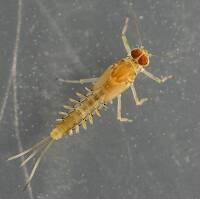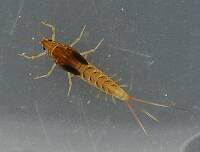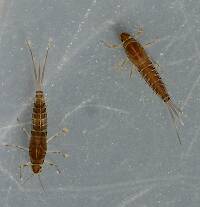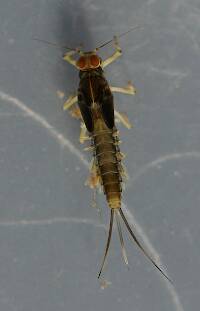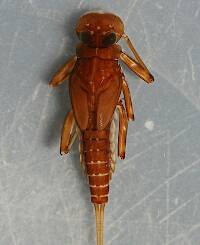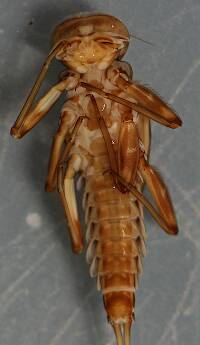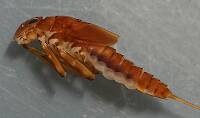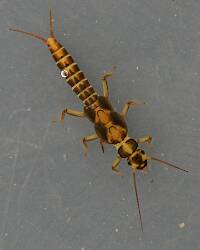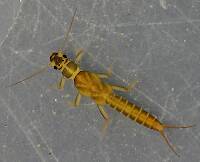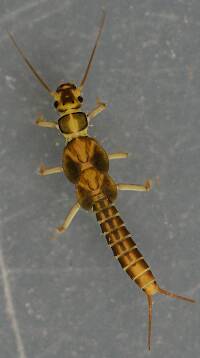
Blue-winged Olives
Baetis
Tiny Baetis mayflies are perhaps the most commonly encountered and imitated by anglers on all American trout streams due to their great abundance, widespread distribution, and trout-friendly emergence habits.
Featured on the forum

I was not fishing, but happened to be at an unrelated social event on a hill above this tiny creek (which I never even saw) when this stonefly flew by me. I assume it came from there. Some key characteristics are tricky to follow, but process of elimination ultimately led me to Sweltsa borealis. It is reassuringly similar to this specimen posted by Bob Newell years ago. It is also so strikingly similar to this nymph from the same river system that I'm comfortable identifying that nymph from this adult. I was especially pleased with the closeup photo of four mites parasitizing this one.

Troutnut is a project started in 2003 by salmonid ecologist Jason "Troutnut" Neuswanger to help anglers and
fly tyers unabashedly embrace the entomological side of the sport. Learn more about Troutnut or
support the project for an enhanced experience here.


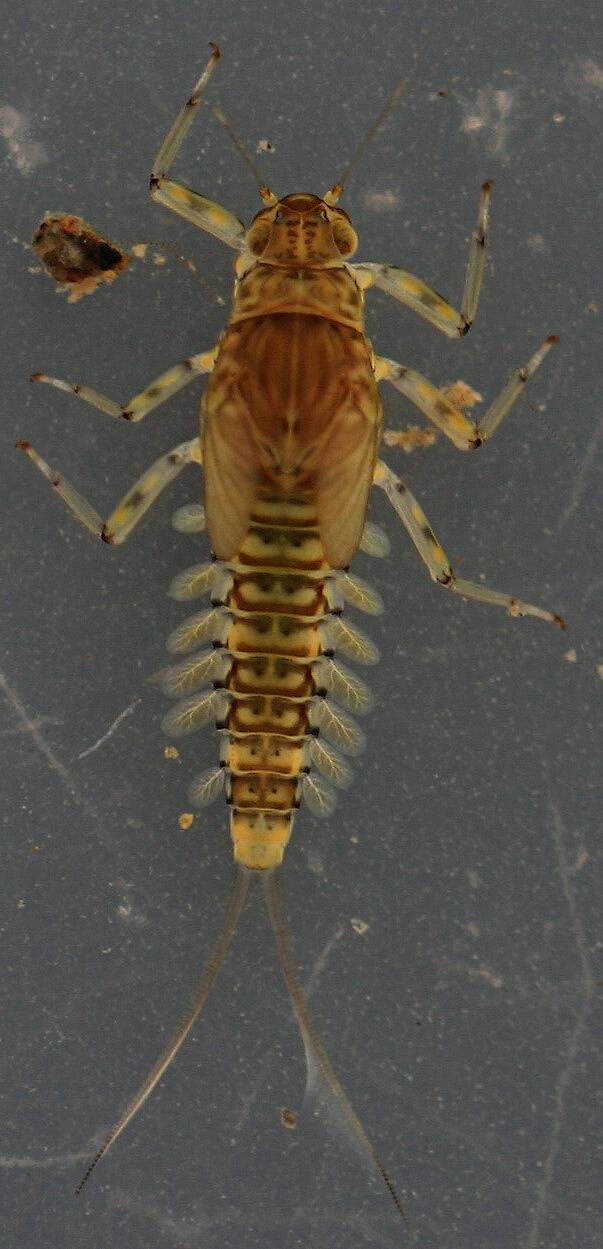
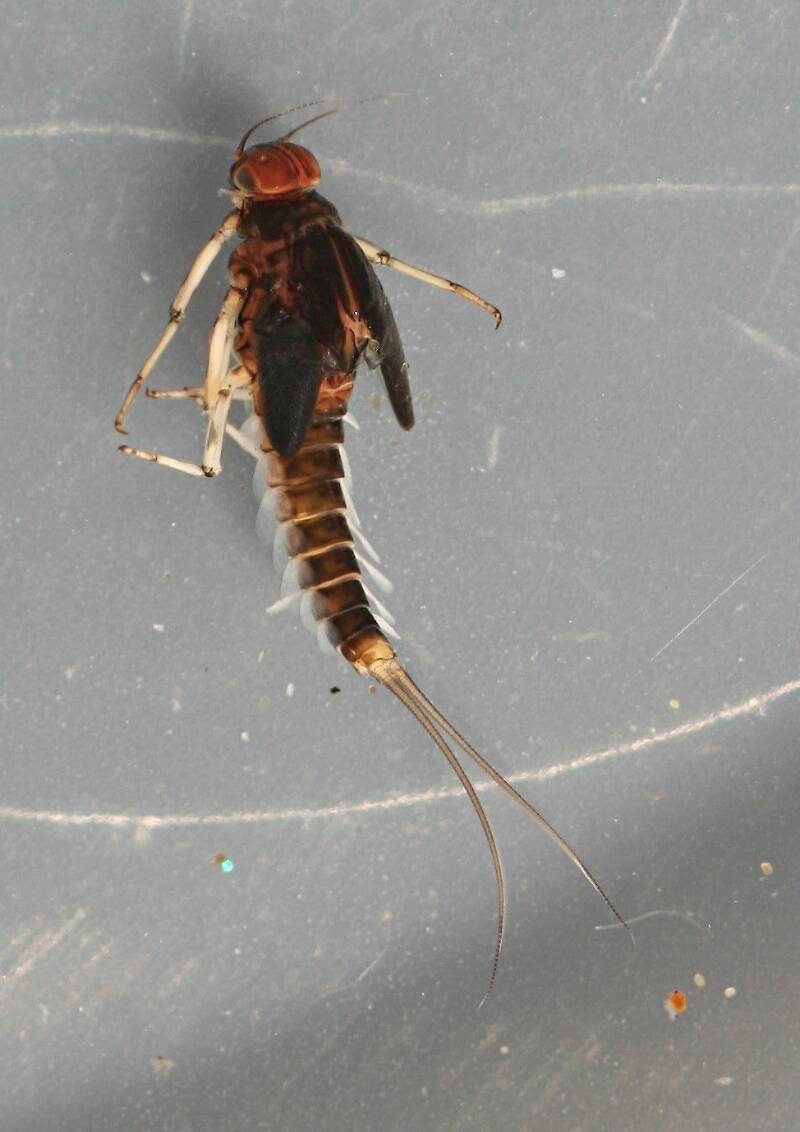


Millcreek on Oct 3, 2014October 3rd, 2014, 8:39 am EDT
Acentrella insignificans nymphs are abundant in the Russian River from early January through April. Most are found in riffles or at the edge of riffles, also found in lesser numbers in glides. They prefer a substrate of clean gravel and cobble. Large numbers of nymphs are often found on the underside of cobbles.
The nymphs were identified to genus using Merritt, Cummins and Berg (2008). They were identified to species using Morihara and McCafferty's "The Baetis Larvae of North America (Ephemeropttera:Baetidae) (1979). They are listed in this account under the synonym Baetis insignificans. http://www.ephemeroptera-galactica.com/pubs/pub_m/pubmoriharad1979p139.pdf I also used Jacobus and McCafferty's key for North American Acentrella larvae in "A new species of Acentrella Bergsstrom (Ephemeroptera:Baetidae) from Great Smoky Mountains National Park, USA" (2006).http://www.ephemeroptera-galactica.com/pubs/pub_j/pubjacobusl2006p101.pdf
The nymphs were identified to genus using Merritt, Cummins and Berg (2008). They were identified to species using Morihara and McCafferty's "The Baetis Larvae of North America (Ephemeropttera:Baetidae) (1979). They are listed in this account under the synonym Baetis insignificans. http://www.ephemeroptera-galactica.com/pubs/pub_m/pubmoriharad1979p139.pdf I also used Jacobus and McCafferty's key for North American Acentrella larvae in "A new species of Acentrella Bergsstrom (Ephemeroptera:Baetidae) from Great Smoky Mountains National Park, USA" (2006).http://www.ephemeroptera-galactica.com/pubs/pub_j/pubjacobusl2006p101.pdf
"If we knew what it was we were doing, it would not be called research, would it?"
-Albert Einstein
-Albert Einstein
Quick Reply
Related Discussions
Topic
Replies
Last Reply
24
Jul 21, 2011
by Entoman
by Entoman
11
Aug 29, 2014
by Entoman
by Entoman
1
Jan 29, 2016
by Martinlf
by Martinlf

